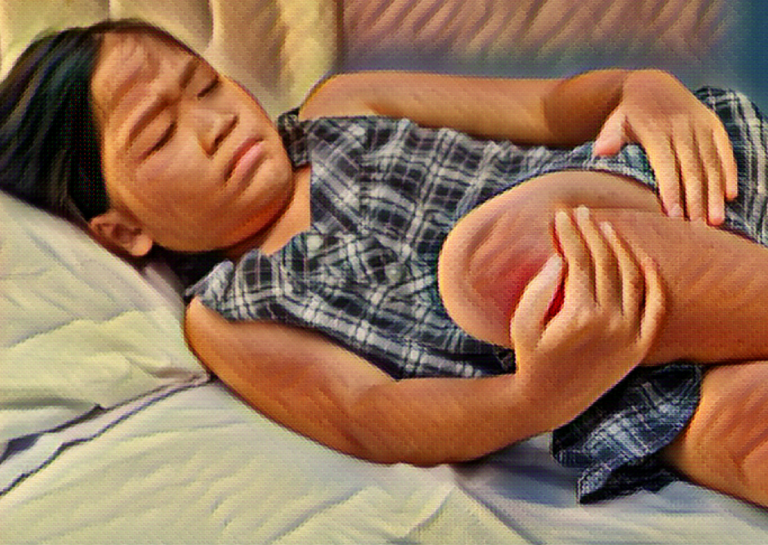Recurrent, self-limiting pain in the limbs that cannot be explained by parents/caregivers, children, or healthcare providers is often referred to as “growing pain.” These pains, also called “idiopathic nocturnal pains of childhood” or “recurrent limb pains of childhood”, are benign and usually subside within one or two years after the onset.
There is no clear definition of growing pains, but generally, the term “growing pains” is used to describe children with limb pain often in the legs and occurs on both sides.
Table of contents
Symptoms
Although there are various definitions of growing pains and pain varies among children, there are common clinical features and symptoms of growing pains to look for. Symptoms include:
- Pain that begins between the ages of 3 and 12 years old
- Pain occurs primarily in the lower extremities.
- Pain is often felt on both sides and located deep in the legs, usually the thigh, calf, knee, or shin.
- Pain is sudden, recurring, and may be severe.
- In older children (6 to 12 years), the pain may be described as crampy, a creeping sensation, or restless legs.
- Pain occurs primarily in the evening or nighttime hours and may interrupt sleep. It usually resolves by morning.
- Normal patterns of activity are maintained.
- Associated complaints of recurrent abdominal pain and/or headaches occur in approximately one-third of patients.
- A family history of growing pains is common.
- The pains are chronic but episodic, typically occurring at least once a week, with an overall duration that often may last years and persist into adolescence.
However, symptom-free periods of days, weeks, or months may occur between episodes.
Diagnosis & Tests
Diagnosis for growing pains is based on exclusion. This means that before making a diagnosis, clinicians should consider and rule out other causes of pain that may require further evaluation and/or treatment. The clinical diagnosis can usually be made in a child with typical health, who remains painless during the day, and has normal physical and musculoskeletal examinations. These children do not need X-rays or lab tests to make a diagnosis.
Treatment & Care
Pain is relieved by massage, heat, or medications such as acetaminophen or ibuprofen. Muscle stretching exercises may relieve symptoms. In one study of 36 children with growing pains, children who were treated with a muscle stretching regimen had a more rapid resolution of their symptoms.
Several studies done at the University of Verona, suggest that lower bone density may contribute to the development of growing pains. Supplementation with vitamin D in children with low levels was found to significantly reduce pain in two studies. In a study of 120 children with growing pains, adding a supplement of vitamin D helped reduce the pain in 104 children who had a vitamin D deficiency. Children found to have low vitamin D levels should receive vitamin D and calcium supplements.
You may have come across claims of bananas or potassium supplements as a treatment option. Although the potassium in bananas could help with some types of muscle cramps, there is no known connection between diet and growing pains.
Prevention
Some coping tools you can establish ahead of time include teaching your child stretches to do on their own, how to massage their legs, and keeping some stuffed animals close by to use as a distraction.
Growing pains are quite uncomfortable and the pain may cause parents to worry. Growing pains are normal and will typically stop by the age of 12 or 13. But if the pain is consistently affecting one leg or if there has been a recent injury, you should consult a doctor. Other signs worth paying attention to are limping, redness, swelling, bruising, rashes, fever, or pain that persists the next day.
References
- Institute of Medicine. 2007. Emergency Care for Children: Growing Pains. Washington, DC: The National Academies Press. https://doi.org/10.17226/11655.
- Vehapoglu, A., Turel, O., Turkmen, S., Inal, B. B., Aksoy, T., Ozgurhan, G., & Ersoy, M. (2015). Are Growing Pains Related to Vitamin D Deficiency? Efficacy of Vitamin D Therapy for Resolution of Symptoms. Medical principles and practice : international journal of the Kuwait University, Health Science Centre, 24(4), 332–338. https://doi.org/10.1159/000431035
- NAISH, J. M., & APLEY, J. (1951). “Growing pains”: a clinical study of non-arthritic limb pains in children. Archives of disease in childhood, 26(126), 134–140. https://doi.org/10.1136/adc.26.126.134
- Baxter, M. P., & Dulberg, C. (1988). “Growing pains” in childhood–a proposal for treatment. Journal of pediatric orthopedics, 8(4), 402–406. https://doi.org/10.1097/01241398-198807000-00004
